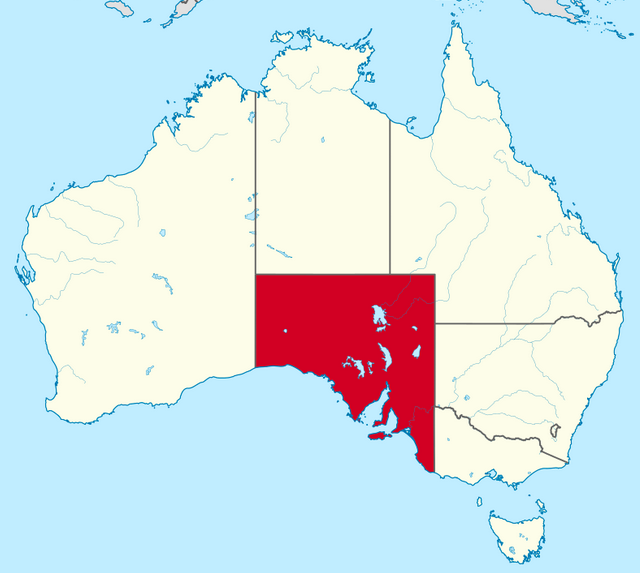Ann Arbor (Informed Comment) – Giles Parkinson at RenewEconomy in Australia reports that rooftop solar briefly generated 101% of South Australia’s electricity demand on Saturday around 2 pm local time.
This milestone is important, since it was reached entirely with rooftop solar on residential and business edifices rather than with industrial-scale solar farms, of which South Australia has some 300 MW worth. Some observers had questioned whether rooftop solar could supply 100% of an electricity grid, arguing that since it is a distributed system it is inherently unstable and would cause blackouts. It turns out that rooftop solar can be made stable, with superfast computer adjustments of feed inputs, with batteries, and other technology.
“South Australia. By TUBS – Own work This W3C-unspecified vector image was created with Adobe Illustrator. This file was uploaded with Commonist. This vector image includes elements that have been taken or adapted from this file: Australia location map.svg (by NordNordWest)., CC BY-SA 3.0, https://commons.wikimedia.org/w/index.php?curid=16876418.
South Australia at one point supplied 114% of its electricity consumption on Saturday, such that some power inputs had to be switched off or the excess exported, or stored in the state’s 150 megawatt mega-battery.
As of early July 2023, 379,860 rooftop solar systems had been installed across South Australia, with a capacity to generate 2.186 gigawatts of electricity. That is roughly the output of two small nuclear reactors. Except the rooftop panels will never melt down or threaten anyone with radiation or become strategic targets in a war (as the Zaporizhzhia nuclear plant has become in Ukraine).
Australia as a whole puts up about 3.25 gigawatts worth of new rooftop solar up every year.
7 News Australia: “Self-sufficient William Creek powered entirely by solar | 7NEWS”
South Australia only a decade ago was mainly dependent on dirty coal for its electricity. On Saturday, coal use fell to a new low, as did fossil gas use. A small amount of fossil gas capacity has been kept in order to stabilize the grid, but it may now be phased out as unnecessary. South Australia is on track to get 100% of its electricity from solar and wind by 2027. So Saturday’s extraordinary statistic is four years away from being an ordinary fact of life.
South Australia, with an area as big as Texas, has a population of about 1,854,000 — more than three-fourths of which lives in Adelaide down on the coast. I had noted earlier, “Adelaide was originally populated by the aboriginal Kaurna people, who called it Tarndanyangga. It is now about as populous as San Diego. It was settled by free British immigrants, unlike the rest of Australia, which was a penal colony. In the nineteenth century, “Afghans” were brought in as camel drivers. It has the oldest continuously functioning mosque in Australia, constructed in 1889, and the state is known for its dedication to religious freedom.”
The United States has many areas that are just as suited to rooftop solar as South Australia, but often Republican politicians working for Big Coal and Gas have put in punitive charges to discourage consumers from adopting them.




 © 2025 All Rights Reserved
© 2025 All Rights Reserved